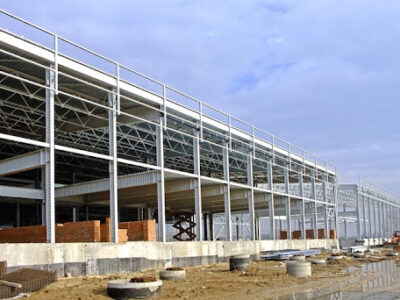Have you ever wondered how large landscapes, such as powerline corridors and highways, are kept free from overgrown vegetation? It’s not an easy task, but with the help of aerial vegetation management techniques, it becomes possible to maintain clear and unobstructed paths. In this article, we will explore the fascinating world of aerial vegetation management and how it contributes to creating unobstructed landscapes.
What is Aerial Vegetation Management?
Aerial vegetation management is the practice of using helicopters or other aircraft to control and remove vegetation that poses a threat to infrastructure, such as powerlines, roads, and railways. It involves the skilled maneuvering of aircraft equipped with specialized tools and technologies to trim, prune, or remove trees, shrubs, and other vegetation.
The Importance of Unobstructed Landscapes
Unobstructed landscapes play a crucial role in ensuring the smooth functioning of various infrastructures. Here are some reasons why maintaining clear paths is important:
- Safety: Overgrown vegetation can pose a significant safety hazard by interfering with the visibility of drivers, impeding the movement of vehicles, and potentially causing accidents. By keeping the landscapes clear, we can ensure the safety of both motorists and pedestrians.
- Reliability: Unobstructed landscapes contribute to the reliable delivery of essential services, such as electricity, telecommunications, and transportation. By preventing vegetation from encroaching on infrastructure, we can minimize the risk of service disruptions and ensure uninterrupted access for the public.
- Environmental Conservation: Aerial vegetation management allows us to strike a balance between maintaining clear paths and preserving the natural environment. By selectively removing vegetation, we can prevent the spread of invasive species, protect native habitats, and promote biodiversity.
Techniques Used in Aerial Vegetation Management
Aerial vegetation management involves the use of various techniques and tools to effectively control vegetation growth. Here are some commonly used methods:
- Precision Trimming: This technique involves the precise trimming of vegetation around powerlines, roads, and railways using specialized cutting tools attached to aircraft. It allows for the removal of overhanging branches and encroaching vegetation without causing damage to the infrastructure.
- Herbicide Application: In some cases, herbicides are applied to control the regrowth of vegetation after trimming. This helps to prevent rapid regrowth and reduces the frequency of maintenance operations.
- Manual Removal: In situations where precision trimming is not feasible, manual removal techniques are employed. Trained crew members suspended from helicopters or utilizing elevated platforms manually remove vegetation using hand tools.
Benefits and Challenges
Aerial vegetation management offers several benefits, but it also comes with its own set of challenges. Let’s take a look:
Benefits
- Efficiency: Aerial vegetation management allows for quick and efficient vegetation control over large areas. It significantly reduces the time and resources required compared to ground-based methods.
- Accessibility: By utilizing aircraft, even remote and hard-to-reach areas can be easily accessed for vegetation management. This ensures that no part of the landscape is left unattended.
- Cost-effectiveness: Although aerial vegetation management may seem expensive at first, it provides long-term cost savings by reducing the frequency of maintenance operations and minimizing the risk of infrastructure damage.
Challenges
- Weather Dependency: Aerial vegetation management operations are highly dependent on weather conditions. Unfavorable weather, such as high winds or heavy rain, can limit or delay the effectiveness of the operations.
- Environmental Concerns: While aerial vegetation management is essential for maintaining unobstructed landscapes, it must be carried out responsibly to minimize any potential negative impacts on the environment. Measures are taken to ensure the proper disposal of trimmed vegetation and the use of environmentally friendly herbicides.
Conclusion
Aerial vegetation management is a vital practice that ensures unobstructed landscapes and the safe and reliable functioning of infrastructure. By employing specialized aircraft and techniques, we can effectively control and remove vegetation, creating a clear path for motorists, pedestrians, and essential services. The benefits of aerial vegetation management outweigh the challenges, making it an indispensable tool in maintaining our modern infrastructure. So, the next time you drive along a powerline corridor or a highway, remember the hidden efforts that go into clearing the path for unobstructed landscapes.










Comments